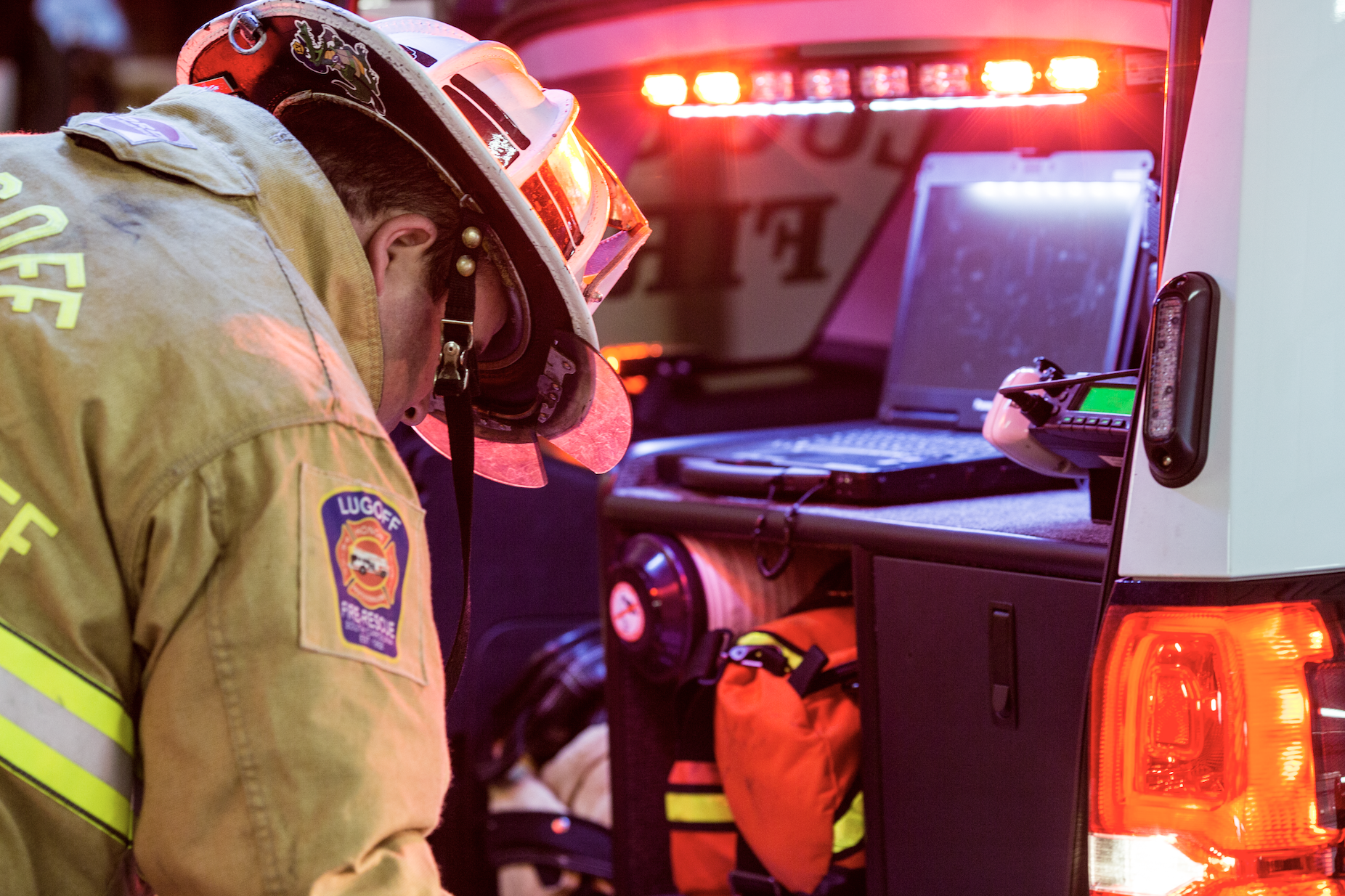
In the aftermath of 9/11, FirstNet was established to give public safety professionals access to a dedicated communications network built to meet their mission: saving lives, solving crimes, and protecting communities.
Operated through a public-private partnership between the federal government and AT&T, FirstNet is the only nationwide wireless broadband network built for first responders, with first responders.
In an emergency, every second matters — and FirstNet ensures that first responders have reliable, secure access to voice, data, video, and location services when they need it most.
Operating on its own Band 14 spectrum, the network provides a secure, high-priority connection even when commercial networks are overloaded — ensuring public safety teams stay connected when it matters most.
A Look Back: The FirstNet Rollout
The FirstNet network buildout began in 2018 with the launch of Band 14 and the FirstNet Core. That same year, the FirstNet Deployable Network Asset Program launched, giving public safety agencies access to deployable assets like Satellite Cells on Light Trucks (SatCOLTs), which boost coverage in areas affected by natural disasters, large events, or emergencies.
FirstNet supported nearly 100 deployments in its first year alone — including for active shooter responses, tornadoes, wildfires, and Hurricane Florence — proving its value early on.
Where We Are Now: The FirstNet Network in 2025
Today, more than 27,000 public safety agencies and organizations rely on FirstNet. Over 5.5 million FirstNet connections are in use across the country, spanning police, fire, EMS, 911 centers, school security, utility crews, and healthcare workers.
In 2024, the FirstNet Authority and AT&T announced a 10-year, $8 billion investment to evolve and expand the network. This includes:
-
$6.3 billion for a new standalone 5G core dedicated to public safety communications
-
5G enhancements for deployable assets (including flying COWs and updated SatCOLTs)
-
Expanded rural and remote coverage through high-power tower builds
-
Enhanced cybersecurity infrastructure and 24/7 threat monitoring
-
Modernized apps and devices tailored to mission-critical operations
FirstNet is also evolving to support mission-critical services that integrate seamlessly with land mobile radio (LMR) systems — combining the best of two-way radio with advanced LTE and 5G capabilities.
Public Safety Communications in Action
Here’s what communications powered by FirstNet look like in the field today:
-
Firefighters pulling up building layouts before entering a structure
-
Hazmat teams accessing detailed chemical data at the scene
-
Police officers uploading evidence or running plates from their vehicles
-
Dispatchers viewing live drone or camera feeds and sending alerts
-
School security teams instantly connecting with local 911 or first responders
These capabilities give public safety professionals faster access to critical information and help reduce response times across the board.
FirstNet-Ready Devices: Built for the Job
With FirstNet, public safety personnel can access a growing catalog of certified LTE and 5G devices, including rugged smartphones, tablets, modems, sensors, and purpose-built radios.
In addition to certified smartphones, tablets, and radios, FirstNet users have access to a full range of accessories—from remote speaker microphones and rugged holsters to in-vehicle charging stations and earpieces. These accessories are built to perform in harsh conditions and keep communications clear, hands-free, and mission-ready.
Motorola Solutions offers several FirstNet-ready options, such as:
-
APX NEXT Smart Radio, which integrates LTE and LMR
With the ongoing 5G expansion, FirstNet devices now support advanced features like real-time video, AI-assisted threat detection, biometric monitoring, and wearable camera integrations — all with public safety-grade durability and support.
Resilient, Secure, and Always On
FirstNet is built with public safety resilience in mind. From wildfires and hurricanes to large-scale emergencies, the network is engineered to stay up and running when it matters most.
That includes hardened infrastructure tailored to regional risks, along with a nationwide fleet of deployable network assets — like Satellite Cells on Light Trucks (SatCOLTs), flying Cells on Wings (COWs), and mobile command centers — available to support coverage during planned events or disaster response.
The FirstNet Core—the foundation of the network—is monitored around the clock to help ensure continuity, security, and performance across all operations. It’s designed to meet the toughest standards for data protection, including partnerships with the Departments of Homeland Security and Defense.
Getting Started with FirstNet
Adopting FirstNet doesn’t have to happen all at once. Many departments, especially those with legacy analog systems or limited budgets, are taking a phased approach.
Here’s how to get started:
-
Conduct a review of your current communication systems
-
Identify where FirstNet devices and LTE/5G can improve safety and efficiency
-
Begin phasing out older analog equipment
-
Talk with a trusted communications partner to develop a step-by-step rollout plan
At Chicago Communications, we work closely with agencies to design practical, cost-effective roadmaps to FirstNet — whether you’re building from the ground up or integrating with existing LMR systems.
Ready to future-proof your communications system?
Contact us to learn how FirstNet and ChiComm can help your team stay connected — every shift, every call, every time.
Want to make sure your team is prepared? Download our Public Safety Communication Checklist to get started.



